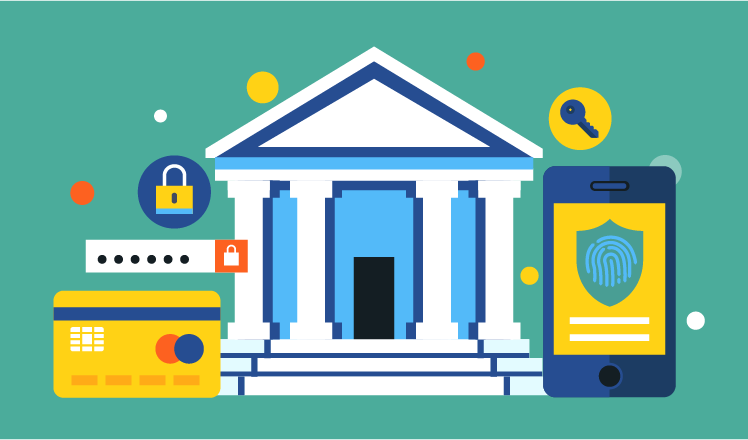In today’s digital age, mobile banking has revolutionized the way we manage our finances. It provides us with convenience, speed, and accessibility. However, it also introduces new challenges and risks related to security. Ensuring the safety of your finances while using mobile banking is of utmost importance.
The Rise of Mobile Banking
Mobile banking has witnessed tremendous growth in recent years. With the advent of smartphones and mobile apps, financial institutions have embraced this technology to offer their customers seamless banking experiences. Mobile banking allows users to check account balances, transfer funds, pay bills, and even apply for loans, all from the palm of their hand.
Understanding the Risks
While mobile banking offers numerous benefits, it’s essential to be aware of the risks involved. Here are some common threats to mobile banking security:
Malware and Phishing Attacks
Malicious software (malware) and phishing attacks are significant concerns for mobile banking users. Cybercriminals often use deceptive techniques to trick users into revealing sensitive information such as usernames, passwords, and banking details. These attacks can occur through malicious apps, fake websites, or phishing emails.
Unsecured Wi-Fi Networks
Using unsecured Wi-Fi networks exposes your mobile banking activities to potential eavesdropping and data interception. Hackers can intercept your connection and gain access to your sensitive information, including login credentials and financial data.
Device Theft and Loss
Mobile devices are prone to theft and loss. If your smartphone falls into the wrong hands, unauthorized access to your banking apps and personal information becomes a significant concern. It’s crucial to take precautions to protect your device and secure your data.
Best Practices for Mobile Banking Security
To ensure the safety of your finances while using mobile banking, here are some essential best practices to follow:
Keep Your Device Updated
Regularly update your smartphone’s operating system and mobile banking apps. Updates often include security patches that address vulnerabilities and protect against potential threats.
Install Trusted Mobile Banking Apps
Only download mobile banking apps from trusted sources such as official app stores. Verify the app’s legitimacy, read user reviews, and check the developer’s reputation before installing.
Use Strong and Unique Passwords
Create strong, complex passwords for your mobile banking apps. Avoid using easily guessable passwords, such as birthdates or sequential numbers. Additionally, use different passwords for each of your financial accounts to minimize the impact of a potential breach.
Enable Biometric Authentication
Take advantage of biometric authentication options like fingerprint or facial recognition provided by your smartphone. These features add an extra layer of security by requiring your unique biometric data to access your mobile banking apps.
Be Cautious of Suspicious Emails and Messages
Exercise caution when receiving emails, text messages, or other forms of communication related to your mobile banking. Avoid clicking on suspicious links or providing personal information unless you are certain of the sender’s legitimacy.
Avoid Using Public Wi-Fi for Banking
Whenever possible, avoid conducting mobile banking transactions on public Wi-Fi networks. Instead, use a secure and trusted network, such as your home Wi-Fi or a personal mobile hotspot.
Regularly Monitor Your Accounts
Stay vigilant and regularly review your bank account activity. Report any suspicious transactions to your financial institution immediately. The earlier you detect and report fraudulent activity, the better chance you have of resolving it quickly.
Set Up Account Notifications
Enable account notifications or alerts offered by your bank. These notifications can alert you to any unusual or unauthorized account activity, providing an additional layer of security.
Additional Security Measures
In addition to the best practices mentioned earlier, here are some additional security measures you can consider:
Two-Factor Authentication
Enable two-factor authentication (2FA) whenever possible. This adds an extra step to the login process by requiring a second form of verification, such as a unique code sent to your mobile device.
Virtual Private Networks (VPNs)
Consider using a virtual private network (VPN) when accessing your mobile banking apps. VPNs encrypt your internet connection, making it more difficult for hackers to intercept your data.
Mobile Security Apps
Install reputable mobile security apps that offer features like malware detection, app scanning, and anti-theft capabilities. These apps can provide an extra layer of protection for your device and data.
Secure Wi-Fi Connections
When using Wi-Fi networks, ensure they are secure and encrypted. Look for networks with WPA2 or WPA3 encryption, as these are considered more secure than older encryption protocols.
Educating Yourself about Mobile Banking Security
Staying informed about the latest trends and best practices in mobile banking security is crucial. Regularly read articles, blogs, and resources provided by trusted sources to enhance your knowledge and awareness of potential threats and countermeasures.
Conclusion
Mobile banking offers convenience and accessibility, but it also comes with inherent security risks. By following the best practices outlined in this article and staying informed about mobile banking security, you can ensure the safety of your finances and enjoy the benefits of mobile banking without compromising your financial well-being.
FAQs
Is mobile banking secure?
Mobile banking can be secure if you take appropriate security measures. By following best practices such as using strong passwords, enabling biometric authentication, and avoiding risky Wi-Fi networks, you can enhance the security of your mobile banking activities.
How often should I update my mobile banking app?
It’s recommended to regularly update your mobile banking app as soon as new updates become available. This ensures that you have the latest security patches and protections against emerging threats.
Can mobile banking apps be hacked?
While no system is entirely immune to hacking, reputable mobile banking apps employ robust security measures to protect your data. By using trusted apps from official sources and following security best practices, the risk of hacking can be significantly reduced.
What should I do if I suspect unauthorized activity on my mobile banking account?
If you notice any unauthorized activity on your mobile banking account, contact your financial institution immediately. They will guide you through the necessary steps to secure your account and resolve any fraudulent transactions.
Should I use public Wi-Fi for mobile banking?
It is generally advised to avoid using public Wi-Fi networks for mobile banking transactions. Public Wi-Fi networks are often unsecured and can expose your sensitive information to potential eavesdropping and data interception.

